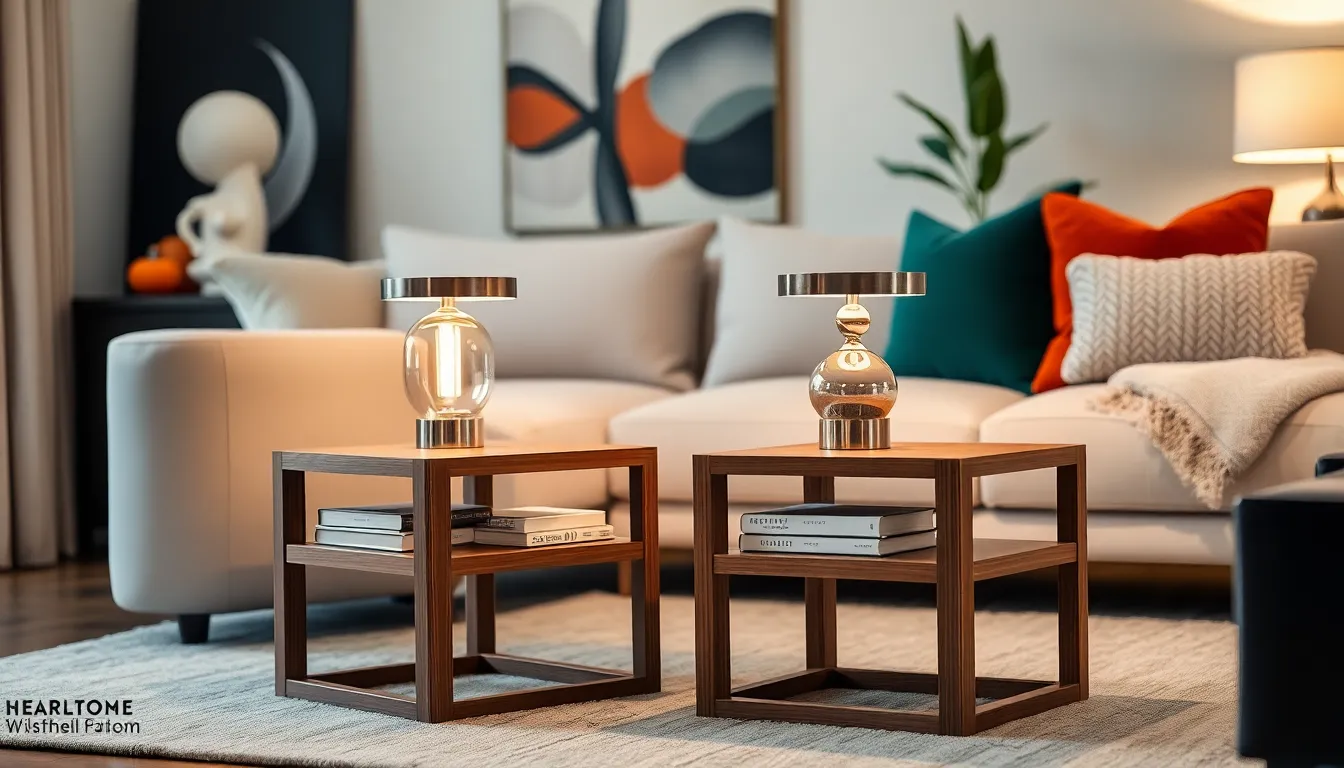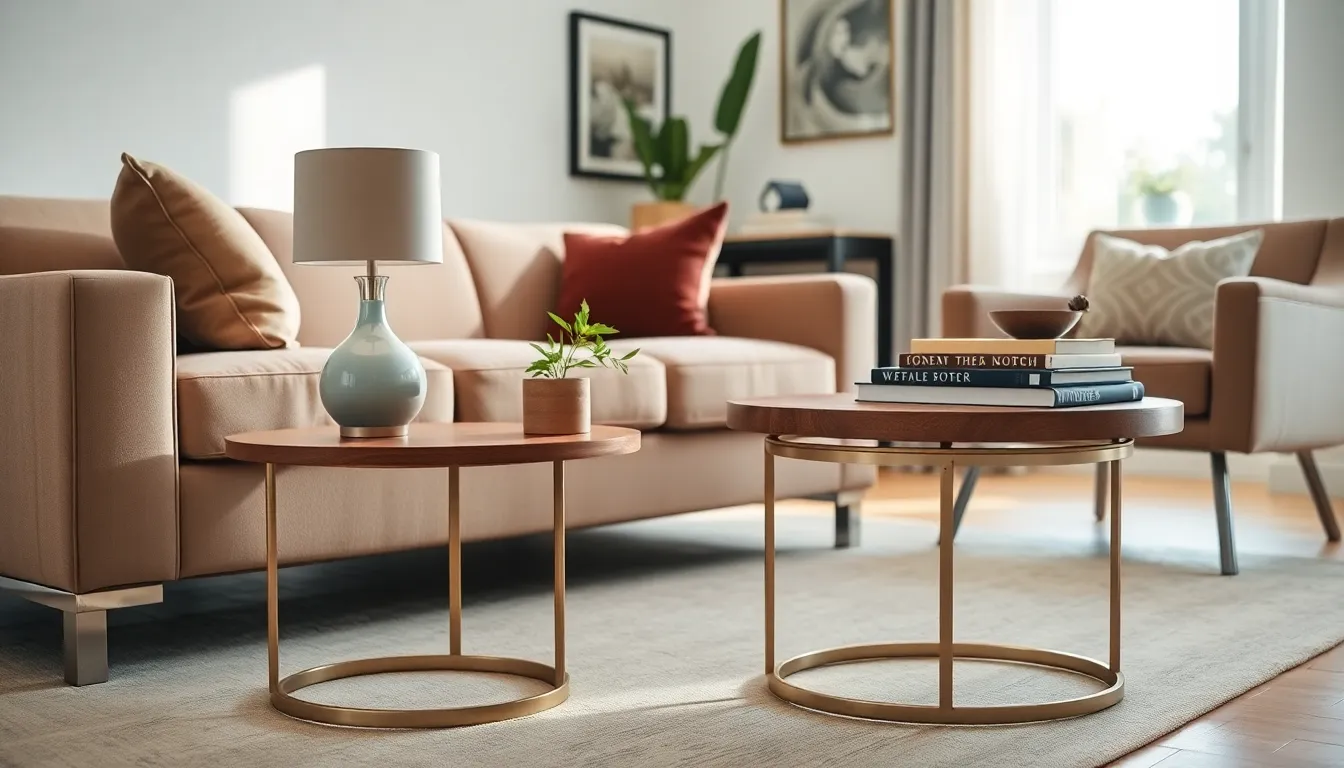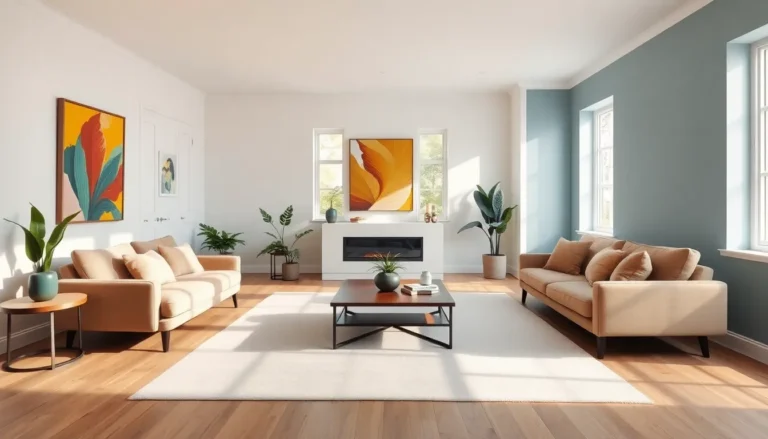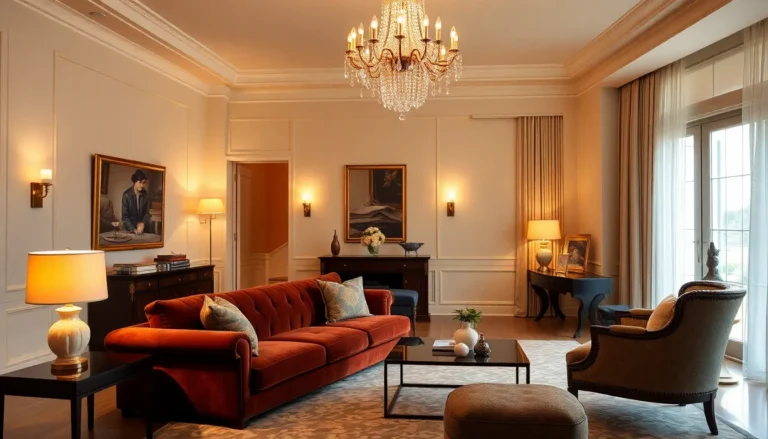Ever walked into a living room and felt something was missing? Like that punch in a comedy when the timing is just right? Enter the unsung hero of furniture: the end table. These little stylish warriors stand guard beside sofas and chairs, serving up both form and function without breaking a sweat. In this guide, we’ll dive deep into why end tables are essential in living room design, explore various types, and reveal how to pick and style them like a pro.
Table of Contents
ToggleImportance Of End Tables In Living Room Design

End tables play a pivotal role in living room design. They bridge the gap between functionality and aesthetics, allowing homeowners to blend practicality with style. Imagine the visual flow of your space: end tables can enhance this by providing balance. Also, they help define the conversation areas in larger rooms, making everything feel cohesive.
Also, end tables emerge as functional pieces that can hold lamps, books, or even that cup of coffee that seems to magically float out of reach. They add layers to your space, creating a warm ambiance and inviting atmosphere, essential ingredients for a comfy den. In essence, neglecting end tables is like skipping seasoning in a recipe. You might end up with a bland space, and nobody wants that.
Types Of End Tables
A plethora of end table styles exist, each with distinct characteristics. Here’s a look at some popular types:
- Traditional End Tables: Often made of wood, they boast classic designs that fit comfortably in almost any living room.
- Modern End Tables: Sleek and minimalist, these tables focus on clean lines and functionality, perfect for contemporary spaces.
- C table: This innovative design slides easily under your sofa or chair, offering easy access without taking up too much space.
- Nest of tables: These can be grouped together or separated, providing flexible options depending on your needs.
- Ottoman Tables: Functional as both a table and extra seating, these provide versatility in a compact form.
- Accent Tables: Often bright or uniquely designed, these tables serve as fashionable statement pieces, bringing color and character to your space.
The choice truly depends on the overall theme of your room and personal preferences.
Functionality Of End Tables
When it comes to functionality, end tables shine bright. They offer a resting place for items that typically clutter the space. For example, place a lamp on an end table to illuminate the corner of your room. This not only brightens the area but creates a cozy atmosphere for late-night reads or intimate gatherings.
Also, consider the hidden storage options available. Many end tables come with drawers or shelves that serve as perfect spots for magazines, remote controls, and other essentials. So, not only are they visually appealing, but they also help keep the clutter at bay.
Also, end tables provide a stage for decor items, showcasing plants, photographs, or unique pieces of art. They allow for personal expression, making your living room truly yours.
Choosing The Right End Table For Your Space
Selecting the right end table involves a few key considerations. First, think about the size. Measure the height and width of the area where the table will reside: a piece that’s too big can dominate your space, while one that’s too small may get lost.
Next, consider the style. Let the end table complement the existing furniture without completely mismatching, or, in some cases, deliberately clash to create a funky aesthetic.
Material plays a significant role too. Wood brings warmth, while metals provide a modern edge. Sometimes, a combination of materials can create the perfect balance. For instance, a wooden top with metal legs can serve as a stylish focal point.
Finally, think about the table’s function. Is it primarily for decorative purposes, or will it serve as a practical item during gatherings? Whatever the intention, aligning the table’s purpose with your lifestyle is crucial.
Styling Tips For End Tables
To elevate the aesthetics of your end tables, a few styling tips can go a long way. Start by focusing on creating a balanced look, mix different heights and sizes of decor items. For example, stack a few books and place a small plant or candle on top. This can add texture and depth.
Layering is another technique that can enhance visual appeal. Think about adding a textured runner or placemat under some items to create a foundation. This doesn’t just add style: it also creates a visual boundary for the pieces displayed.
Don’t forget about lighting. A small lamp can significantly change the ambiance, making the corner feel cozy and inviting.
Finally, remember to refresh periodically. Changing out decorations according to seasons or simply rotating items in and out can keep your end tables looking fresh and inviting.




